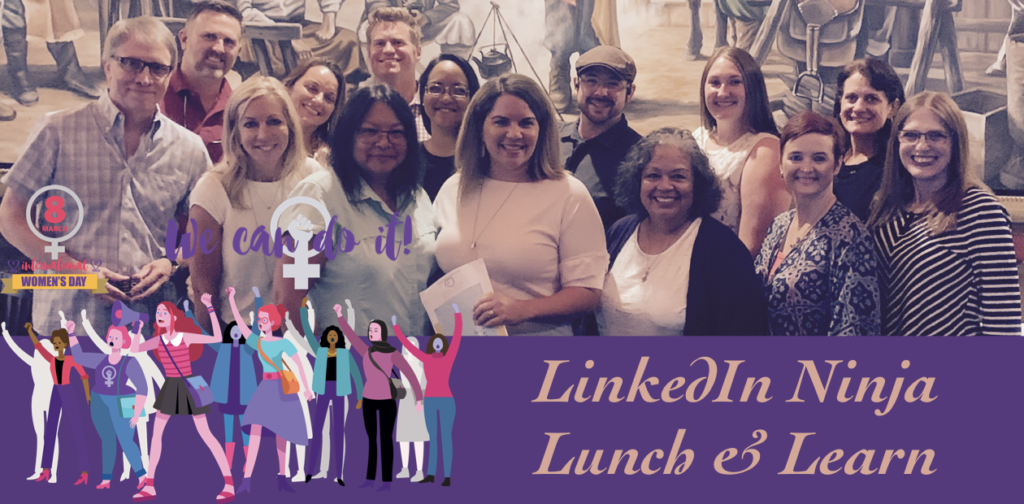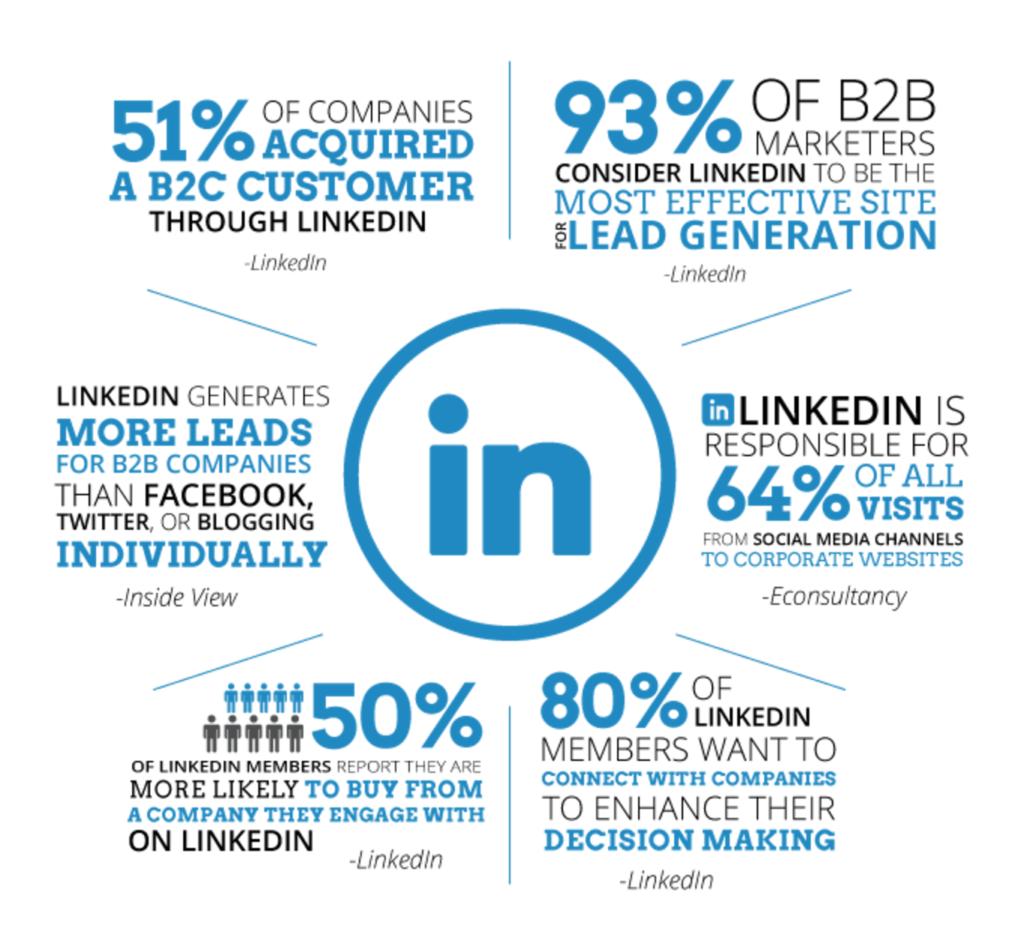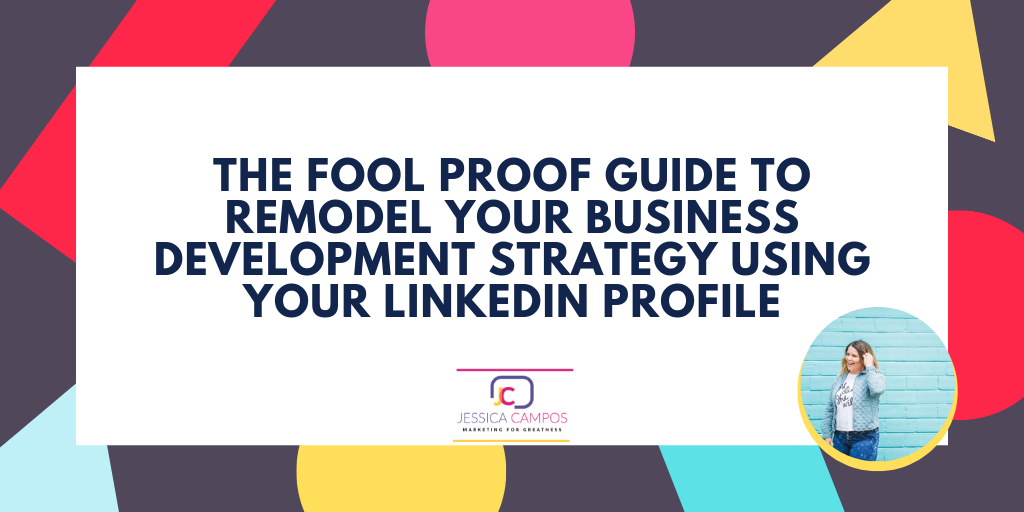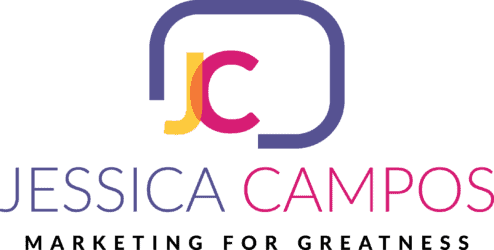The Fool Proof Guide To Remodel Your Business Development Strategy Using Your LinkedIn Profile
Hi there! As always, whenever I do live training, I always love to hear from the attendees what are their challenges so I can create content for The Greatness Blog.
So this is one of those articles based on my LinkedIn training where the attendees learned all about the LinkedIn algorithm and walked away with my unique LinkedIn summary template.
Shout out to Estancia Brazilian Steakhouse for always give us a 5-star treatment!
Who came to my LinkedIn training?
We had professionals and entrepreneurs from different backgrounds that had one thing in common: they want to use social media for their business development tasks! Therefore, they were very interested in getting LinkedIn strategies (the most effective ones).

Do you consider yourself a business developer? Maybe! Or maybe not! That’s why you’re reading this!
So let’s revamp and remodel your business development strategy (or start one)
Business development can be the innovation hub of your organization, and an exciting career for visionary and strategic professionals. It can be a source of disruptive strategies and partnerships that help companies to leapfrog their competitors. And yet, the term “business development” is thrown around by many executives who don’t fully understand its power to transform.
Most professionals—consultants, engineers, lawyers, accountants, IT services providers, and other professional service providers—don’t enter their chosen career so they can spend their days selling.
But the reality is, that in order to grow a professional service business, all of the firm’s partners and professionals must be involved and successful in business development.
For professionals who were never taught how to sell, this is a daunting task.
What Exactly Do Business Development Professionals Do?
Business developers (BD) and business development teams identify areas of opportunity:
- ✔️New products
- ✔️New markets
- ✔️New partnerships
- ✔️New leads
- ✔️New distribution channels.
Their role is to assist companies to acquire new customers and continue to sell products and services to the existing ones.
As a small business owner wearing many hats, it’s critical that you and your team (if you have one) learn business development skills to grow your company.
Keep in mind, business development skills are separate from sales skills, which you will also need.
Whether you are hiring a Business Development Manager, or you are using business development practices to increase your partnerships with prospective customers, ask yourself,
“Am I using business development (BD) as a marketing tool, a sales channel, a source of innovation, or a corporate development hub?”
Not sure?
Let’s show you how the best BD professionals identify and build momentum for new initiatives. And, if you’re considering adding a BD function in your team, I have some insights for you.
Why is LinkedIn Marketing A Great Place To Start, Now More Than Ever?
Of all B2B leads coming from social media:
- ✔️80% of those leads come from LinkedIn
- ✔️46% of social media traffic coming to your company site comes from LinkedIn
- ✔️43% of marketers reported that they have sourced customer from LinkedIn
Check this infographic and other shocking stats.

With stats like these, it’s clear that Linkedin is one of the best social media platforms that you need to leverage for business development.
Just like your website is intended to generate leads, your LinkedIn profile can serve as your pipeline to drive prospects.
Outdated LinkedIn Marketing Practices (Please Discontinue Immediately)
Number one: a connect message – yep we went against the norm and it works 100%.
The days of you finding prospects and sending them the boring “connect message” are over! I know that LinkedIn wants you to use those, but just STOP!

Unfortunately, due to the increasing rate of spam, people now have their guard up, no matter how authentic your message may be.
Remember that most prospects have hundreds of pending LinkedIn invites in their inbox, which means that by the time your message is seen, you may get maybe a few seconds of your prospect’s time and attention.
Let your profile and headline do the work!
Take my LinkedIn profile as an example.

This 120-character section of your LinkedIn profile is prime real estate. When done correctly, your headline can be used to promote your brand values, core message, expertise, and highlight how you can solve your prospect’s biggest problem or challenge. This is THE place to sell yourself and your services. Use your 120 characters wisely.
You still send your connections requests, with no message. If your future connections sense that you’re a trusted professional, they will accept. And then you can talk to them – NO SPAM.
Number two: to mass messaging prospects with inauthentic message sequences
I recently posted shared a video in my Facebook group for entrepreneurs, on the three types of salespeople: imposter, opportunistic, and consultant.
It’s pretty obvious that you don’t want to be an imposter or someone who is opportunistic and self-serving. Rather, taking a consultative approach to messaging prospects will help build the genuine connections you want to make.
The goal is to seek out how you can provide viable solutions, not just serving your own agenda.
Number three. To have existing connections in your industry
Nope, you don’t need it. LinkedIn will send you suggestions based on your current industry. For example, if you’re a mortgage lender, you will get requests from other mortgage lenders. Don’t accept them and for sure, don’t accept those suggestions from LinkedIn either.
Your goal is to develop your network outside of what you already have. LinkedIn isn’t a place where you meet for a virtual highschool reunion (that’s Facebook).
Stop just accepting connections and start being more strategic about discovering new people.
Number four: to post a lot of content
Results from an experiment conducted by LinkedIn Engineering found that over the past two years, the LinkedIn algorithm has seen more than a 50% increase in viral activity.
The LinkedIn algorithm places connections over self-serving interests. The two primary goals of Linked in are to prioritize content that is relevant to their users, and to promote engagement to build meaningful relationships.
This update in the algorithm increases the likelihood of interaction as well as more content creation and organic engagement down the road.
Your job is NOT to share a LOT of content but to post relevant information that provides VALUABLE CONTENT that targets your ideal client or customer.
LinkedIn’s organic reach is through the roof and it has to do with their algorithm. When you understand how it works, you will hit the trending status and BOOM!

In late 2018, it was predicted that LinkedIn would become the number one social networking channel for B2B, especially after Facebook got in trouble. You might remember it as the Cambridge Analytica scandal.
As a veteran Facebook user and a raven fan, I can tell you I wasn’t paying too much attention to LinkedIn, until the scandal. Once we jumped into a more LinkedIn-focused content, the results were amazing. Based on these stats, we are not the only company who realized the effectiveness of LinkedIn over other platforms.

What truly works from the LinkedIn strategy, is not just the platform. You can get all the LinkedIn profile tips and be joining groups, but that’s not all.
It’s consultative selling.
You don’t need to teach free lessons. You don’t need to barter services. You don’t need to discount. You simply need to solve a problem, and genuinely care.
Social Selling Is Winning Outdated Marketing Strategies
Social selling leverages your social networks to find prospects, develop relationships, and establish rapport, as part of the sales process.
Gone are the days when you just send 50 contact requests with messages and expect to build a list of emails from it. In the past, marketers used “freebies” to educate their potential buyers and persuade them to buy from them. And while social selling isn’t a new form of selling, it needs to be emphasized that this is the most effective, high-value approach to growing your business.
When it comes to LinkedIn, most prospects are inundated with information and have hundreds of pending LinkedIn invites in their inbox, which means that whatever worked in the past, won’t work now. Simply sending out connection requests and spamming prospects won’t cut it.
Your role as a business developer is to lead with providing service, not sales, and value, not volume. When developing your BD strategy, ask your, “Would I want to learn, engage, or connect with what I’m offering?”
Let’s remodel your business development strategy.
What Tools Do You Need To Activate Sales and Business Development in LinkedIn?
- ✔️Personal Brand
Whether you have developed it or not, everyone has a personal brand. Simply stated, a personal brand is how you’re perceived, and what other people think of you. When you share your knowledge and brand values through digital content, you can build your personal brand and be known as a go-to resource in your industry, build authentic relationships, and make you stand out from people in similar positions as you.
Having a LinkedIn profile picture that showcases your brand is key. Don’t be afraid of claiming your unique voice. Just because it’s a professional platform doesn’t mean it has to be boring.
- ✔️Strong LinkedIn Profile
Consider your LinkedIn profile as prime real estate for your prospects to discover, learn and potentially reach out to you as the solution to their problem.
The first thing that LinkedIn users look at is your profile picture and headline, so it makes sense to make sure that they highlight your strengths.
When describing who you are what you do, it’s important to be as specific and compelling as possible. According to Forbes.com, your headline is how you attract your ideal clients, it’s also the most searched section of your profile. Take some time with your headline.
In terms of your summary section, it should be carefully crafted, strategically written, and communicate the value that you bring. Write the keywords that will come up when potential clients do a LinkedIn search.
There are 2,000 characters available in the LinkedIn profile summary. Use them all!
- ✔️The WMYU “What Makes You Unique” Statement
If you want to stand out, you need to share what makes you unique. Of course, it’s important to include your skills, years of experience, education and prior work experience, but you can also share information from your personal life.
For example, if you love trying out tacos wherever you go, that could be a great connection point for people who are fans of tacos too! What you do in your free time, is what makes you, YOU.
Outside of work, who are you? Sharing other parts of your life, not just your business is one of the most genuine ways to connect with like-minded individuals on LinkedIn.
- ✔️A strong content marketing strategy
We’re in the age of consultative, or social selling. Long gone is the old model where sales is simply pitching a product. These days, the most effective approach is to identify your ideal client’s problem, develop a genuine relationship, and guide them towards the appropriate solutions that best fit their needs.
At the end of the day, this approach benefits all parties involved.
The buyer spends less time dealing with long and drawn out sales pitches, and the sellers can be focused on nurturing qualified leads, through the use of social media.
In order to survive the LinkedIn algorithm, brands need to create and publish informative and educational content that provides solutions to the problems their target audience is struggling with.
- ✔️Strategic hashtags
Using hashtags on LinkedIn, you can reach a wider and targeted audience. I have a dedicated article about LinkedIn hashtags that every business developer needs to read! Click here to read my 3 favorite LinkedIn hashtags strategies.
Spoiler alert! LinkedIn hashtags are not the same as Instagram or Twitter hashtags!
Once you have all these tools mentioned above, you will be equipped to expand your connections using the LinkedIn advanced search. As a business developer, your goal is to find prospects and filter them, to make sure they are of high quality.
Where Business Developers Could Find Prospects On LinkedIn?
Now that you’re not just going to send out connection requests and see what sticks, you will need a plan to find those connections. Where are they?
- ✔️Advanced search is still effective.
- ✔️Jobs are great places to find new connections.
- ✔️LinkedIn Groups.
- ✔️Hashtag boards
Closing Thoughts
After reading this, if you’re not adding official business development activities to your prospecting tasks, you should! And now that you know how to leverage LinkedIn to generate unique business opportunities beyond just future clients, take action!
If you’re a business developer and have been using LinkedIn, I hope you found opportunities to improve your game plan. If there’s something you must do is to STOP spamming connections. Start using more authentic methods and you will notice a difference.
One more thing! Don’t just limit your strategies to target prospects. Keep in mind your potential partners as well. Make GREAT content and shoot for hitting the trending status!
I hope these LinkedIn tips truly help you to give you something else to do with the platform, other than requesting connections!
If you’re up boosting your revenue using LinkedIn marketing, let’s chat!

